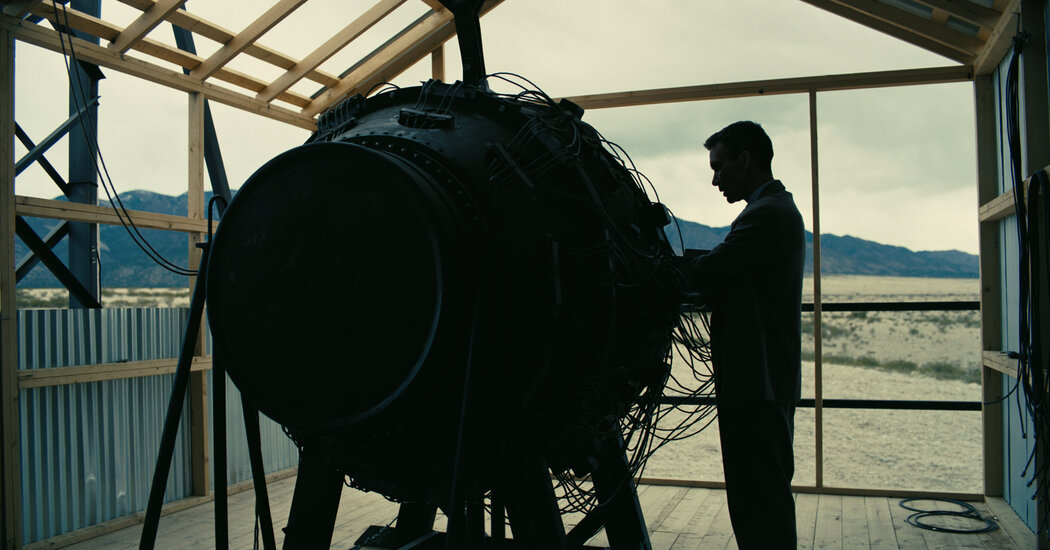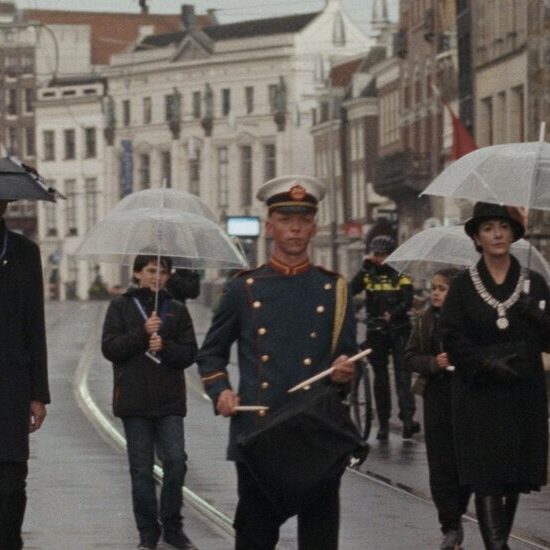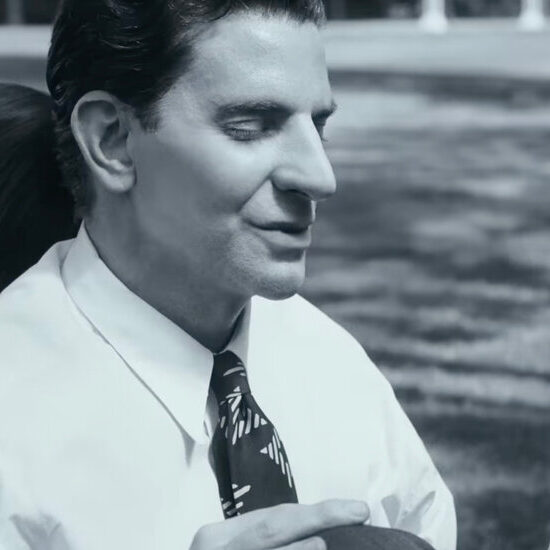
The film’s virtuosity is evident in every frame, but this is virtuosity without self-aggrandizement. Big subjects can turn even well-intended filmmakers into show-offs, to the point that they upstage the history they seek to do justice to. Nolan avoids that trap by insistently putting Oppenheimer into a larger context, notably with the black-and-white portions. One section turns on a politically motivated security clearance hearing in 1954, a witch hunt that damaged his reputation; the second follows the 1959 confirmation for Lewis Strauss (a mesmerizing, near-unrecognizable Downey), a former chairman of the United States Atomic Energy Commission who was nominated for a cabinet position.
Nolan integrates these black-and-white sections with the color ones, using scenes from the hearing and the confirmation — Strauss’s role in the hearing and his relationship with Oppenheimer directly affected the confirmation’s outcome — to create a dialectical synthesis. One of the most effective examples of this approach illuminates how Oppenheimer and other Jewish project scientists, some of whom were refugees from Nazi Germany, saw their work in stark, existential terms. Yet Oppenheimer’s genius, his credentials, international reputation and wartime service to the United States government cannot save him from political gamesmanship, the vanity of petty men and the naked antisemitism of the Red scare.
These black-and-white sequences define the last third of “Oppenheimer.” They can seem overlong, and at times in this part of the film it feels as if Nolan is becoming too swept up in the trials that America’s most famous physicist experienced. Instead, it is here that the film’s complexities and all its many fragments finally converge as Nolan puts the finishing touches on his portrait of a man who contributed to an age of transformational scientific discovery, who personified the intersection of science and politics, including in his role as a Communist boogeyman, who was transformed by his role in the creation of weapons of mass destruction and soon after raised the alarm about the dangers of nuclear war.
François Truffaut once wrote that “war films, even pacifist, even the best, willingly or not, glorify war and render it in some way attractive.” This, I think, gets at why Nolan refuses to show the bombing of Hiroshima and Nagasaki, world-defining events that eventually killed an estimated 100,000 to upward of 200,000 souls. You do, though, see Oppenheimer watch the first test bomb and, critically, you also hear the famous words that he said crossed his mind as the mushroom cloud rose: “Now I am become death, the destroyer of worlds.” As Nolan reminds you, the world quickly moved on from the horrors of the war to embrace the bomb. Now we, too, have become death, the destroyers of worlds.
Oppenheimer
Rated R for disturbing images, and adult language and behavior. Running time: 3 hours. In theaters.













